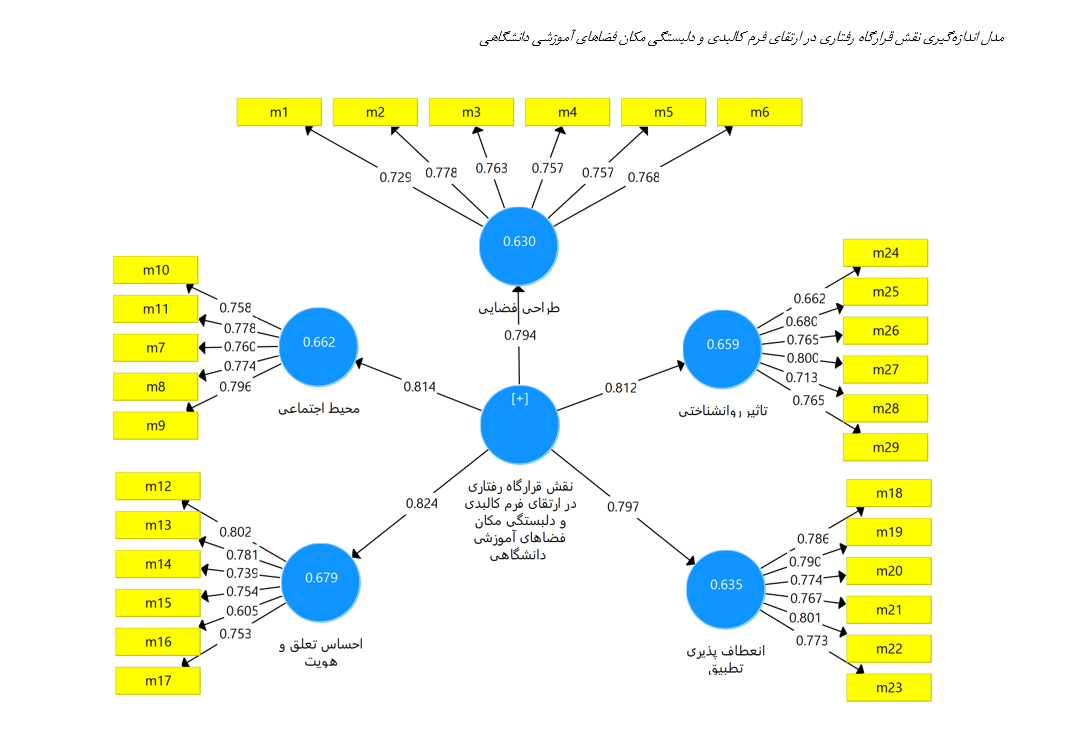Contextual Exploration of the Role of the Behavioral Setting in Enhancing the Physical Form and Place Attachment of University Educational Spaces in Tehran
Keywords:
Behavioral base, physical form, place attachment, educational spacesAbstract
The present study aims to explain a contextual exploration model of the role of the behavioral setting in enhancing the physical form and place attachment of university educational spaces. From a purpose perspective, this research is applied, and from a paradigmatic viewpoint, it is an exploratory mixed-method investigation. In the qualitative stage, interviews were conducted with 15 university faculty members and experts in educational architecture until theoretical saturation was reached, and in the quantitative section, based on Cochran’s formula, 245 experts in the field of educational architecture were selected through simple random sampling. In the qualitative part, the interviews were analyzed using thematic analysis. Accordingly, 29 categories and 5 indicators were identified and classified based on coding and their relation to the main dimensions. Subsequently, through exploratory factor analysis, the dimensions constituting the contextual exploration of the role of the behavioral setting in enhancing the physical form and place attachment of university educational spaces were determined. Finally, using confirmatory factor analysis of the proposed model via Smart-PLS software, the accuracy of the model was confirmed, indicating that the selected concepts, dimensions, components, and indicators are highly precise, and the quantitative results corroborate the findings of the qualitative section.
Downloads
References
Flahaki, M. M. (2007). Roots and theoretical trends in architecture. Tehran: Nasher Faza.
Ghafari, A. (1998). Principles and regulations for school design. Tehran: Organization for Renovation, Development, and Equipment of Schools.
Kamalnia, H. (2012). Grammar of designing learning environments. Subhan Noor Publishing.
Rahmati, R. (2001). The impact of environmental factors on behavior in educational environments. School Journal, 32.
Samiazar, A. R. (2000). History of school transformations in Iran. Tehran: Organization for Renovation, Development, and Equipment of Schools.

Downloads
Published
Submitted
Revised
Accepted
Issue
Section
License
Copyright (c) 2025 Amin Tavakoli (Author); Mitra Kalantari (Corresponding Author); Mohammad Behzadpour, Hossein Ali (Author)

This work is licensed under a Creative Commons Attribution-NonCommercial 4.0 International License.







